My first encounter with the sickle bush tree was two years ago during a hike in Nahargarh hills in Jaipur. I never paid attention to these trees despite hiking in this region because there is nothing striking about this tree. However, you can’t miss this tree because of its flowers during the monsoon season. The flower of this tree resembles the bottle brush in its appearance and has two striking colors – Pink and yellow! Slowly, the pink fades to reveal white color.
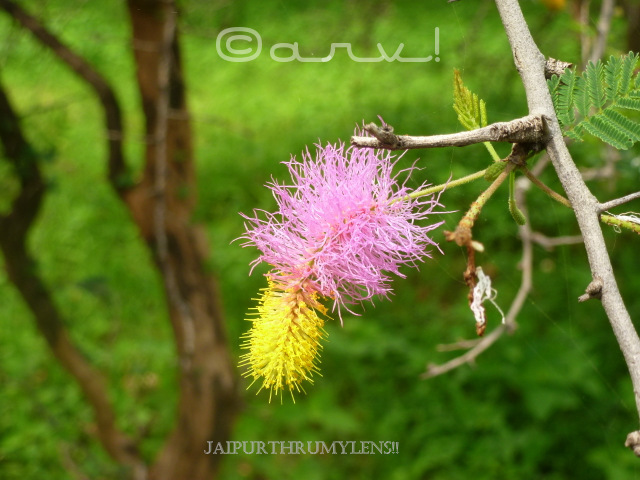
My second encounter with this tree was in the same year on a visit to the World Forestry Arboretum in Jaipur. Here are a few pictures from that trip.
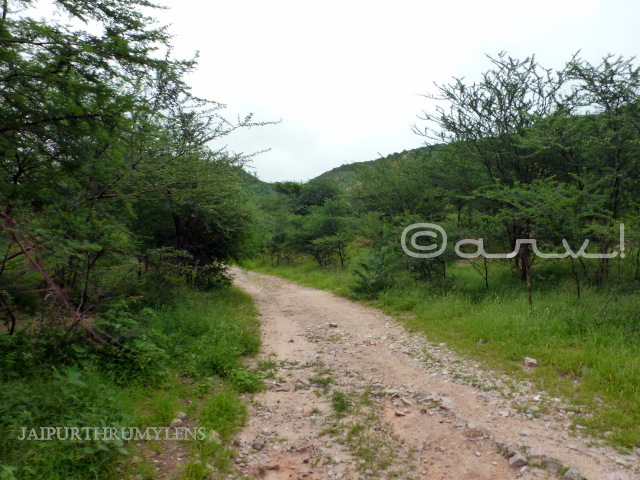
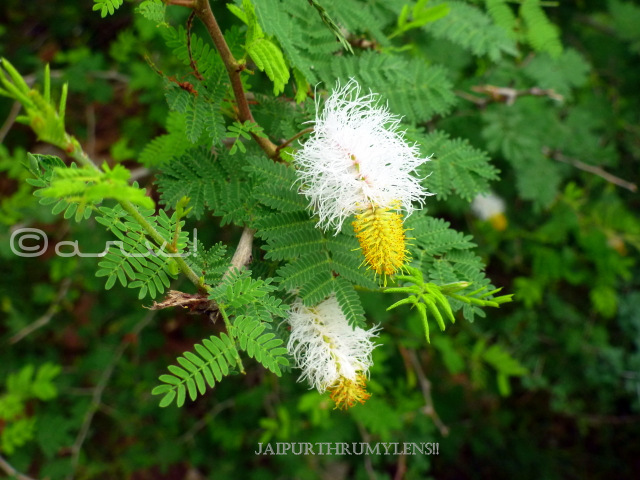
Subsequently, I also found them in Smriti Van, a landscaped forest land in the heart of Jaipur.
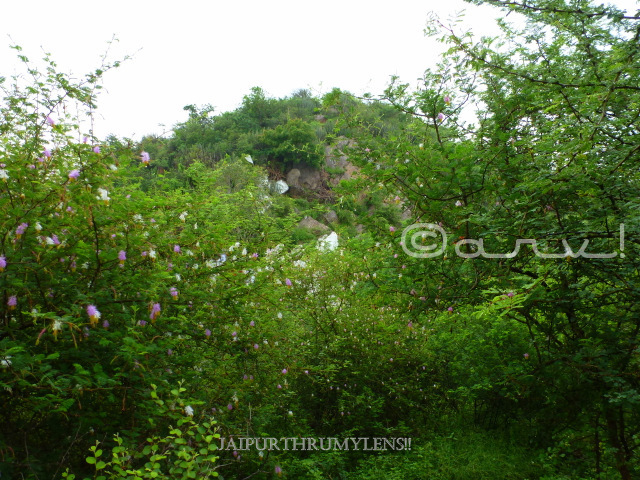
In the following year, I sighted this tree in Aravali hills near Amer. A fellow travel blogger who accompanied me during that hike was mesmerized by the shape & color of its flower. Back then, I had no clue about its name or details.
To be fair, Sickle Bush is more like a bush rather than a tree. Even though the botanist and foresters claim that it grows up to 20-25 feet, the ones I found in this region were not more than 7-8 feet tall. Maybe this variant doesn’t grow tall or it can be a geographical issue too.
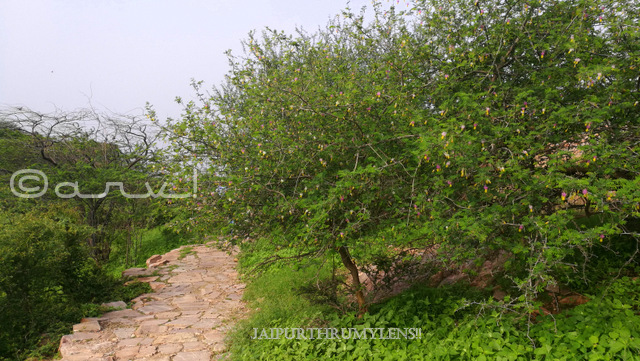
Check out related post:
I bet you haven’t heard about Thor Danda
Anogeissus Pendula – The resident tree of Aravali Hills
The scientific name of the Sickle bush tree is Dichrostachys Cinerea & also known as Mimosa Cinerea. It is popular by many common names in India like Kunali, Khairi, Goya Khair, Veer Taru, Durangi Babool, Sigam Kathi, Neelajammi, Khoiridya, Marud, Vellantaru, and Viradru. In some countries, it is known as a Chinese lantern tree because of the shape & color of its flowers. The name Sickle Bush stems from its seedpods which are packed close together and curves in the shape of a sickle. I don’t have a picture of seedpod to share.
Last week during a hike, I sighted this tree in a large number.
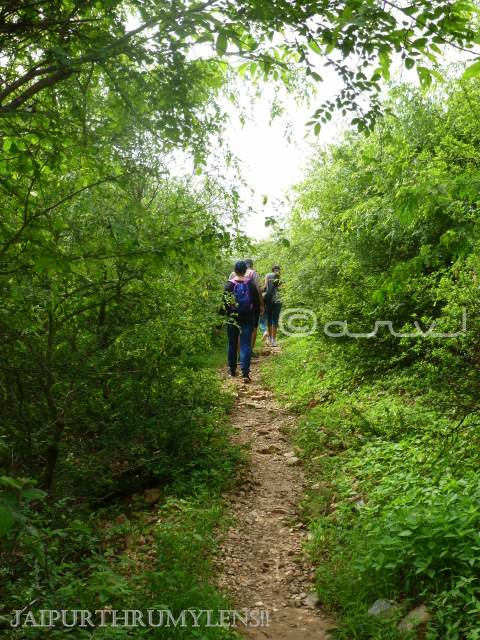
Sickle Bush is a native of African continent although it is found in other continents too – Indian subcontinent and parts of northern Australia. There is a confusion whether it is a native to the Indian subcontinent or not. I’m not sure if this was introduced by traders or colonial rulers because there is no unanimity among experts. I will choose to side with the opinion that Sickle bush is native to the Indian subcontinent. There are reasons to believe so! As per geologists millions of years ago, the Indian subcontinent along with African and Australia continent were conjoined. This is precisely the same area where this plant can be found.
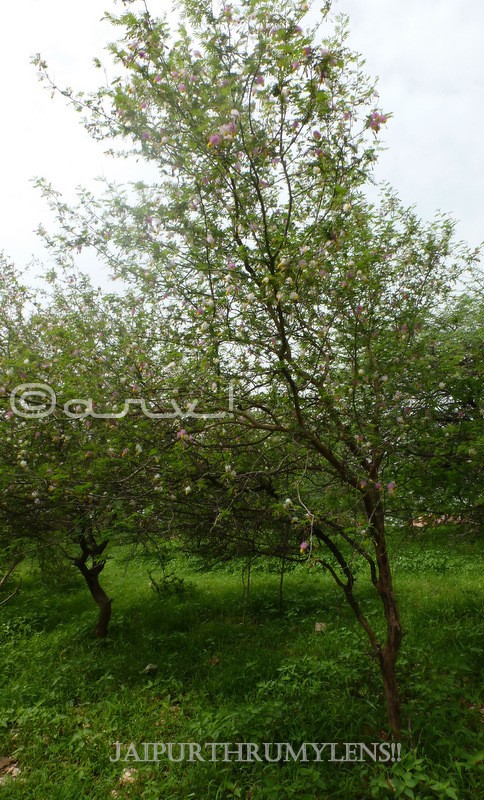
In South Africa, it is popular as Kalahari Christmas tree or bell Mimosa. There is another curious name for this bush – Acacia puncture tyre because its spine is hard and often cause a puncture in tyre and it resembles Acacia tree family.

Sickle bush is part of Mimosa genus. Mimosa word is derived from the Greek language and it implies acting swiftly because some of the plants in this species are known to fold their leaves on touching or trapping insects. This genus can be confused with Acacia family because of similar looking features. But the distinguishing feature is that Mimosa flowers have less than ten stamens in its flowers. Many experts treat Sickle Bush tree to be a part of Acacia sub-family.
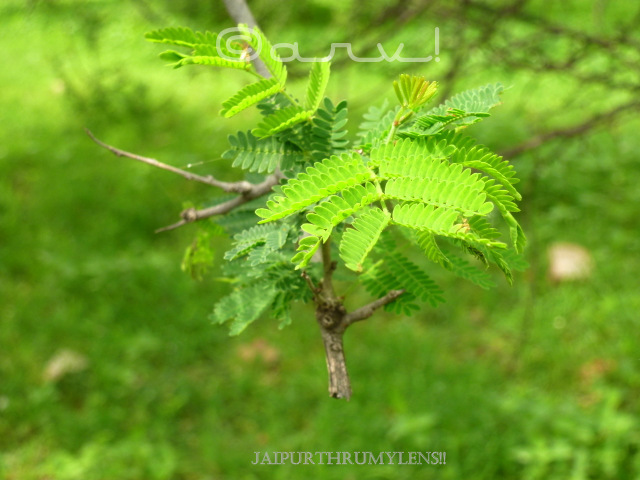
Dichrostachys Cinerea is generally found in dry deciduous forests. Exactly the kind of climate Aravali offers. Some even believe that it offers medicinal benefits. I am not aware of its Ayurvedic benefits but in Africa, the traditional tribes use it for its healing properties.
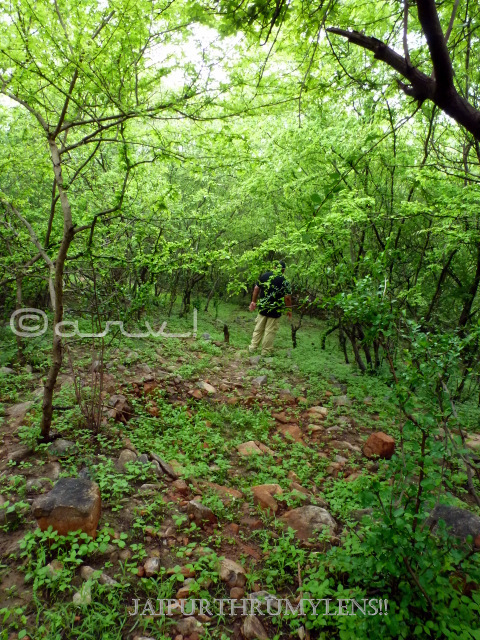
In many countries, this tree is considered invasive and unwanted. It makes a great plant for the Aravali hills because it adapts very well to the local climate. Due to the rocky base, heat and scanty water availability, very few plant species adapt well to local topography & climatic conditions. Dhok, Babool, Israeli Babool are most commonly found trees in Aravali hills. Here is a picture of Aravali hills post monsoon. Do read this post – Hills are green which explains the change in topography of Aravali Hills with the onset of monsoon.
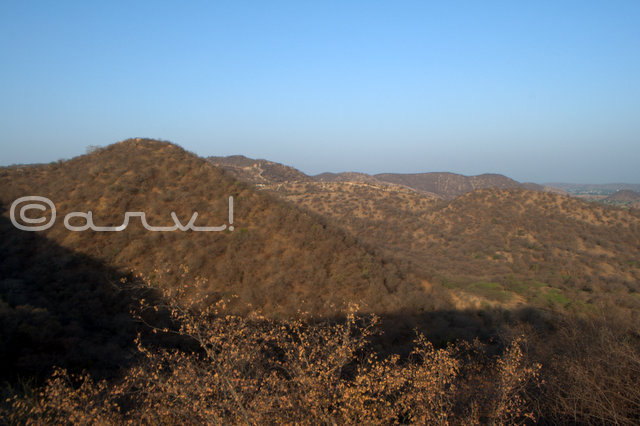
Forest department carried out extensive plantations of imported Acacia trees like Israeli Babool or Vilayati Babool till 1990’s in Aravali hill range across Rajasthan. However, these trees haven’t benefited local ecology. Due to their ill-effects, they are not being advocated anymore. This case is similar to Eucalyptus which was planted under a massive drive across many Indian states till 1980’s but owing to the soil underneath turning infertile, the popular opinion went against it. In Cuba and elsewhere in the Caribbean, this plant is considered invasive; a massive drive was undertaken to uproot these trees. It was introduced during the colonial rule and it is not found naturally in the American continent.
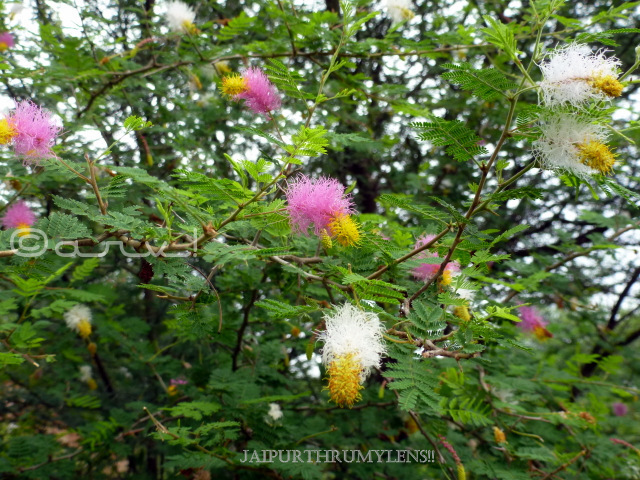
Check out other stories in Trees of Jaipur.
Stay updated via Facebook , Twitter, Instagram, Google+
It is difficult to find a Sickle Bush tree in an urban area but it is quite easy to spot it in a hilly jungle. It is hardwood & locals here consider it as an excellent source of firewood. It can be safely concluded that Sickle Bush tree shies away from urban areas. If you are trekking in Aravalis and come across this flower, I’m sure you will recognize it. Have you ever seen this tree?
If you are a regular reader of Jaipurthrumylens, you must have read my previous posts on unique plants and trees of this region especially in Aravali hills where I hike regularly. I have already written about Thor Danda last year and Anogeissus Pendula. Have you read either of these? Read complete posts on trees found in Jaipur – Trees of Jaipur

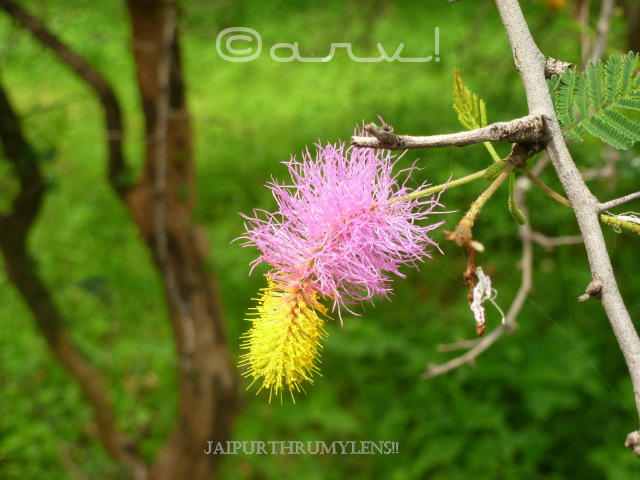
Loved these flowers and the detailed post.. checking out more about Jaipur in your jaipurthroughmyeyes series.
LikeLike
I’m glad you liked it.
LikeLike
Loved these flowers and the detailed post.. checking out more about Jaipur in your blog.. 🙂 I love Rajasthan and it’s culture.
LikeLike
Really the flower is very beautiful, also some nice shots clicked
LikeLike
The photographs are just very beautiful. The text and the detailed research does the tree justice.
Would love to read more on your blog.
LikeLike
I’m seeing this tree for the first time. Awesome shots and excellent narrative. It’s great to see Jaipur through your lens.
LikeLiked by 1 person
Thanks Vasantha. I’m glad you liked it 😃
LikeLiked by 1 person
This bottlebrush flower is very beautiful . Lovely pictures you have uploaded. What’s your good name please ? Actually I was looking for buying a marble God Statue . Are there any makers who work online too ? If you can help me please mail me back .
LikeLiked by 1 person
Thanks, Monika! let’s connect with Twitter. I will try to help you with it. 🙂
LikeLike
Nice blog on Jaipur and beautiful pictures. Please visit my blog . Your feedback will be appreciated.
LikeLiked by 1 person
Great article and beautiful pictures!
LikeLiked by 1 person
Thanks, Saristha. Just out of curiosity how did you stumble upon this post?
LikeLiked by 1 person
Through WordPress. I found ur blog interesting and read this article.
LikeLiked by 1 person
Great! Was that WP suggestion or you found through some tag? I got curious because this post will not interest average reader. And it is certainly not a tree we find everywhere! 🙂
LikeLiked by 1 person
It was WP suggestion if amI remember correctly.
LikeLiked by 1 person
Thanks, Saritha. I enjoyed reading your blog. You write very well. With that I mean the language is simple and easy to understand – words flow well. Nt many travel bloggers write this way. 🙂
LikeLiked by 1 person
Here in northern planes part of our country this tree has become popular for last few years. Here it is called Sami and considered to be a sacred tree.. I too have one at my home planted in a big pot. I love it’s flowers.
LikeLiked by 1 person
Namita, I have never heard of this name but I’m glad that you are well aware of this plant. A lot of people have seen this at some point of time but are unaware of its origin and name. It is a hardy one!
LikeLiked by 1 person
Beautiful pictures and great post.
LikeLiked by 1 person
Thanks, Nikhar. Just curious, How did you find my blog? 🙂
LikeLike
You commented on a Blog post.
LikeLiked by 1 person
Ah! I guess I missed it. 🙂 Thanks
LikeLike
Very nice article. Exactly what I needed on this beautiful tree blossoming all over the Aravalis here in Gurgaon. Looking forward to reading more of your articles!
LikeLiked by 1 person
I’m glad you liked it and you have a chance to witness it in your backyard, Abhinav. What other trees have you come across there?
LikeLike
These Sickle bush tree is found in an unused ground at Railway Protection Force Training centre in Trichy, Tamilnadu.
Yiur Article us really useful
LikeLiked by 1 person
Possibly. I’m glad you found this write-up useful.
LikeLike